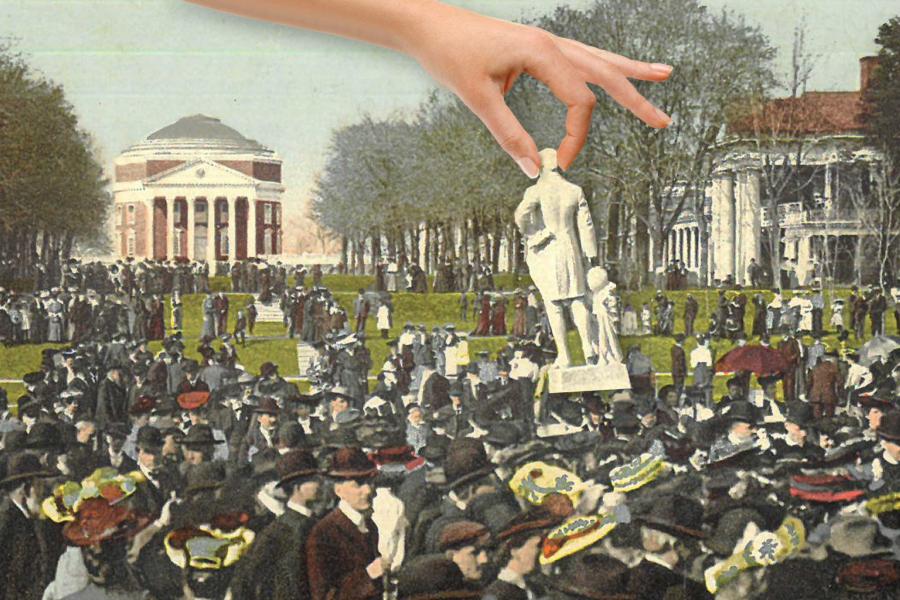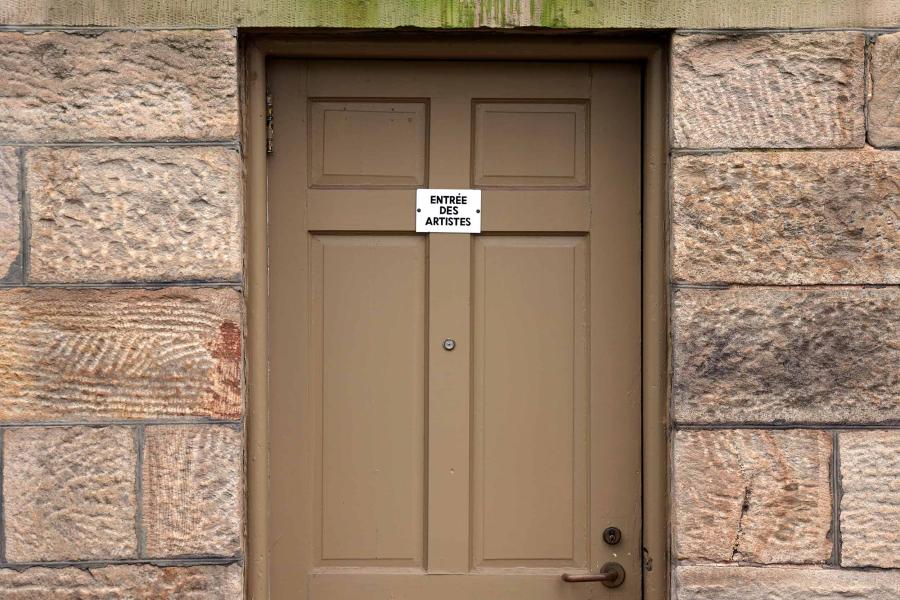Don’t worry if you’re unsure about the three-ton limestone sculpture in the lower garden of Pavilion VI, why it’s there remains a mystery.
The sculpture is the Merton Spire, a really big gift from Merton College, Oxford, that originally perched atop a chapel buttress. A plaque on the piece reads “A pinnacle of Merton College Chapel Tower, erected 1451, presented to the University of Virginia, 1927, by Merton College, Oxford.”
The University of Virginia’s Board of Visitors accepted the gift at its April 22, 1927, meeting. A July 15, 1933, article in The Charlottesville Daily Progress said the spire was “a token of esteem” from Oxford, recognizing the schools’ shared values – but the reason it was placed at the University remains unclear.

An undated photo of the east gardens, possibly from the mid-1930s, shows the Merton Spire on the right. The steps led to a roadway that ran through the gardens until the 1960s. (Ralph Holsinger Collection, Special Collections)
The lack of details is not limited to UVA’s records. Julian Reid, the current Merton College archivist, examined that college’s Governing Body minutes from January 1926 to December 1927 and found only two mentions of chapel spires or pinnacles.
The March 21, 1927, minutes noted a resolution “that the College offer a pinnacle from the Tower to the University of Virginia on condition that that University bears all the cost of removal.”
A second resolution, on May 27, 1927, stated “that the remaining pinnacle at present standing in the Grove be disposed of by the Estates Bursar.”
“There is nothing in the minutes in the 15 months prior to March 1927 suggesting why Merton might have wanted to offer the first pinnacle to the University of Virginia, although I can only think that it was initiated from the Virginia end,” Reid wrote in an email. “Further, there is no clear indication as to whether the pinnacles had been removed recently from the chapel or if they had been removed some time earlier.”












